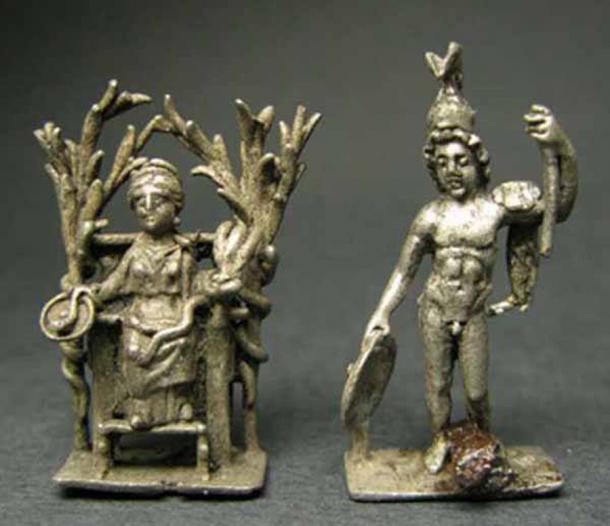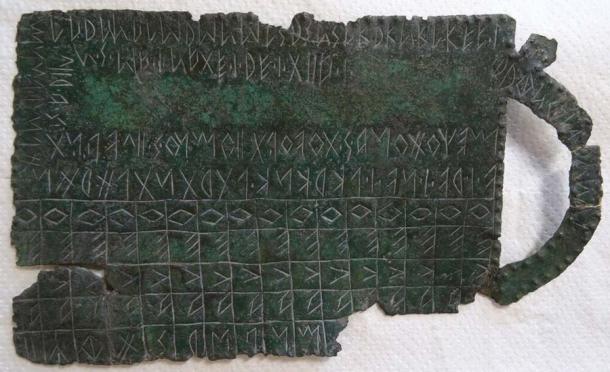Between the eighth and seventh centuries BC, the first manifestations of the Italic people known as Veneti appear in the territory of today’s Veneto, the main region of the northeast of Italy together with Friuli-Venezia Giulia and Trentino Alto-Adige (an area known in Roman times as the X Regio , then Venetia et Histria ). And the Veneti were distinctive for the nature worship beliefs through their Pora Reitia goddess in open grove settings.
The Veneti (properly ” Venetkens,” their native name which probably means “the winners” or “the united”, and not to confound with the modern inhabitants of Venice!) came after the multimillennial succession of numerous previous cultures that developed from Paleolithic to the Bronze Age in this part of Europe.
The true origin of the Veneti (or Venedo) culture remains an intricate historical problem, but Eastern Europe is considered the most likely area of their origins. The Veneti gradually settled a vast territory along the Adriatic coast, and inland in the Dolomite Alps and the Po Valley. They were the founders of numerous ancient and prestigious cities such as Altino, Este, Vicenza, Treviso and obviously Padua (formerly Patava).
The Veneti left significant and lasting cultural traces in the ancient history of these lands ranging from weapons, clothes, and jewelry to elaborate ceramics, as well as highly-developed votive objects.

Three depictions of Pora Reitia the Venito culture’s goddess of nature, usually worshipped in open grove settings. ( House of Secrets )
The Pora Reitia Nature Cult of the Adriatic Venetic People
The Veneti’s sense of the sacred, similarly to Celtic peoples , was not expressed in real templar constructions, but in natural and open environments such as plain and mountain woods, fields and various areas related to the fundamental presence of water (rivers, lakes, springs).
In addition to the widespread and frequent manifestations of devotion to gods and heroes of the Greek, Italic and Roman tradition assimilated over the centuries (such as Jupiter, Mercury, the Dioscuri, Hera / Juno, Apollo, Artemis, Demeter and Persephone, up to Hercules and Diomedes), the best known and most widespread Veneti spiritual cult was devoted to the goddess Pora Reitia (or Reithya). The currently known representations of this goddess are mostly from the Este sanctuary of Este, the principal urban and religious center of the Veneti in the present-day Padua region.
In her representations, the goddess Pora Reitia was depicted as dressed in a large skirt, bearing the keys and sometimes a torch, and often associated with animals such as the crow (the typical funeral bird) and the pig (a probably symbol of life’s prosperity).

Votive plate with a representation of the Adriatic Veneti Pora Reitia goddess from the Museum of Este. (Author provided)
“Reitia” was probably an attributive epithet, which presents various etymological possibilities. It is probably related to the Veniti’s word reito (“river”), which highlights its correlation with the waters and their regenerative value. Another possible origin of the name lies in the Indo-European root rekt, meaning “straighten,” which would indicate the goddess as the guarantor of justice and harmony or perhaps as a divinity who assists in childbirths, “straightening” and “supporting” the children to born.
The proper name of the goddess, Pora, may have been derived from the same root as the Latin verb pario (“to give birth” or “to generate”), and more directly to the Indo-European form per that means “passage” or “to cross” (coming from the Greek ” poros“).
As a divinity related to the concept of passage (as indicated by her connection to the waters and her main attribute, the key ) Pora Reitia was therefore in charge of the sphere of birth and death/burial, as well as healing and rebirth.

Sculptures of Pora Reitia (left) and Hercules (right). (Author provided)
The numerous sanctuaries dedicated to Pora Reitia, among which the most important and prestigious example was evidently Este, were visited at least until the third century AD. On these votive visits it was customary to consecrate offerings such as the typical small bronze votive sculptures (pictured above), depicting parts of the body that had been healed or to be healed. Distinct types of votive tablets and discs were also used for this purpose.
The cult of the Veneti’s Pora Reitia goddess relates also to the practice of writing. Numerous inscribed bronze tablets have been found at the Pora Reitia sanctuaries. These were mostly written in the Veneti alphabet, which shares similarities with Etruscan and other runic languages.

An ancient writing tablet from the Adriatic Veneti culture. ( House of Secrets )
As the Romans rose and the Veneti peoples slowly faded, the areas inhabited by the Veneto found the Virgin Mary of the Christians appealing, given her “similarities” to Pora Reitia. And today one can find and see numerous tiny votive chapels at crossroads and by the rivers in the area of Italy where the Veneti people developed and thrived alongside their nature goddess.
Top image: Examples of the bronze votive offering body parts given to the Veneti Pora Reitia nature goddess at her sanctuary in Este, Italy. Source: McDonald / House of Secrets
By Jari Padoan
Related posts:
Views: 0
 RSS Feed
RSS Feed















 February 25th, 2022
February 25th, 2022  Awake Goy
Awake Goy  Posted in
Posted in  Tags:
Tags: 
















